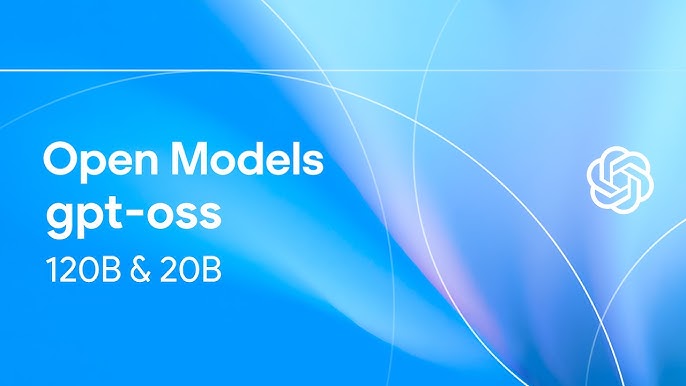OpenAI has once again made headlines in the world of artificial intelligence by launching two new open-source AI models that significantly outperform DeepSeek’s R1. The move signals not only technological advancement but also a strategic push towards open science and transparency in AI development.
These two models, named Prompt-Open and Completion-Open, have been released for public use, setting new standards for performance, efficiency, and ethical sharing of artificial intelligence systems. Their introduction could shift the direction of current AI competition, especially in the realm of open-source reasoning capabilities.
OpenAI's Strategic Push Toward Open-Source Development
The decision to open source the models is not merely a technical one, but a philosophical shift. OpenAI has historically walked a fine line between openness and responsibility. By releasing these new reasoning models, it is demonstrating renewed commitment to enabling global AI development beyond commercial boundaries.
Both Prompt-Open and Completion-Open are designed with multi-layered instruction-following capabilities, surpassing DeepSeek R1 in several benchmark categories including accuracy, processing efficiency, and general reasoning. These models were trained using high-quality datasets refined over years, and now offer the global community the ability to build, analyze, and innovate on top of state-of-the-art systems without relying solely on proprietary tools.
OpenAI’s open-source AI models can be deployed locally and do not require access to private data centers or subscriptions. This helps researchers, small companies, and AI enthusiasts to participate in the AI revolution without needing to access large-scale infrastructure.
How the New Models Compare to DeepSeek R1
In benchmarking tests, both Prompt-Open and Completion-Open consistently outperformed DeepSeek R1, which had previously been one of the strongest open-source alternatives in reasoning tasks. OpenAI’s models showcased better performance in logical deduction, mathematical problem-solving, and instruction-based generation.
Here’s a breakdown of their comparative performance:
- Logical Reasoning: OpenAI’s models showed up to 14% better performance in multi-step logical tasks than R1.
- Efficiency: Due to optimized architecture, both models achieved the same output quality with fewer computational resources.
- Instruction Adherence: The models exhibited superior accuracy in following user prompts, a crucial element for real-world applications.
Unlike DeepSeek R1, which was primarily developed with Chinese language modeling in mind before being extended, OpenAI’s models are trained on diverse multilingual datasets, ensuring broader applicability and fairness.
This leap in performance suggests OpenAI is not just catching up in open-source innovation, but leading it. The company’s models could soon become the new default for research labs and developers needing high-performance, transparent AI systems.
Implications for AI Development and the Industry
The release of these open-source AI models has several broad implications.
1. Lower Barrier to Entry
Smaller startups and research groups now have access to cutting-edge reasoning models without investing millions in infrastructure or proprietary licenses. This democratization of access can fuel more innovation from non-traditional players.
2. Faster Innovation Cycles
Open-source models allow developers worldwide to contribute improvements, conduct independent evaluations, and adapt models to their needs. This leads to faster bug fixing, optimization, and broader applicability in diverse sectors.
3. Pressure on Proprietary Models
Major players like Anthropic, Google DeepMind, and Meta may need to rethink their balance between open and closed systems. If open-source AI continues to catch up or outperform proprietary models, it could reduce the commercial advantage of closed models.
4. Greater Transparency and Accountability
OpenAI’s models allow researchers and journalists to inspect training data biases, ethical implications, and model behaviors in high-stakes use cases. This supports responsible AI development and can help reduce the spread of misinformation or model misuse.
Challenges and Cautions in Open-Source AI
Despite the positives, open-sourcing powerful AI systems is not without challenges. OpenAI has implemented safeguards and usage guidelines to prevent misuse, especially in sensitive domains like surveillance, misinformation, and automated weapon systems.
Moreover, while the models are optimized for reasoning, they still require oversight. Users must understand limitations such as hallucination, knowledge cutoffs, and bias propagation.
Another key concern is compute cost. While local deployment is possible, truly efficient use still demands high-end GPUs and optimization knowledge, potentially limiting the models’ utility in under-resourced settings.
The Bigger Picture: OpenAI’s Evolving Strategy
OpenAI’s launch of these new models is part of a larger trend where the company is balancing its commercial products like ChatGPT and GPT-4 with open innovation initiatives. This dual strategy allows OpenAI to retain its leadership position while nurturing community trust and industry cooperation.
The timing of this launch also matters. With AI policy debates heating up globally — particularly around transparency and control — OpenAI’s open-source initiative is both a technological and political move. It could be interpreted as an attempt to regain favor among researchers who felt alienated by the increasing closedness of large language models.
This release sets a precedent and may influence how governments regulate access and deployment of general-purpose AI. It also strengthens the argument that open innovation can lead to safe, effective, and scalable AI development.
Future Outlook
Looking forward, the release of Prompt-Open and Completion-Open could become a foundation upon which future academic research and AI startups are built. Universities might integrate these models into curricula, while NGOs and international agencies might use them for public-good applications like language translation, data analysis, and decision support.
If OpenAI continues to support and update these models, they could become as important as foundational open technologies like TensorFlow or PyTorch in the coming years.
The road ahead is still complex, filled with ethical, technical, and legal challenges. But with this bold move, OpenAI has rekindled the spirit of open collaboration in AI — and given the global community powerful new tools to shape the future of reasoning AI.
Read More






 Monday, 05-01-26
Monday, 05-01-26







